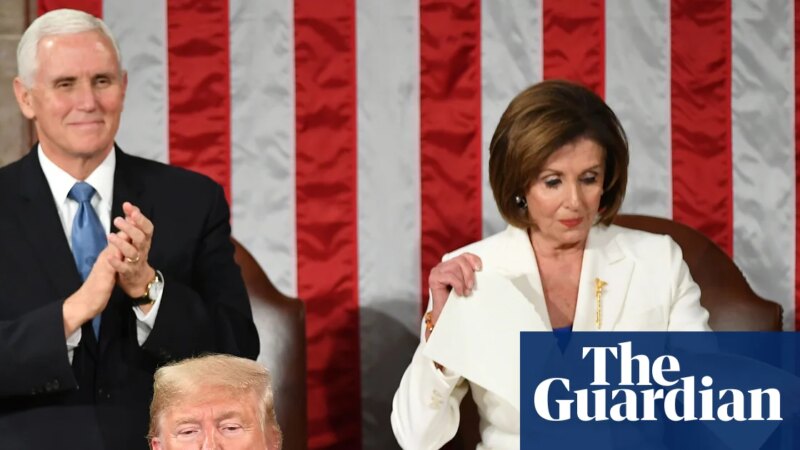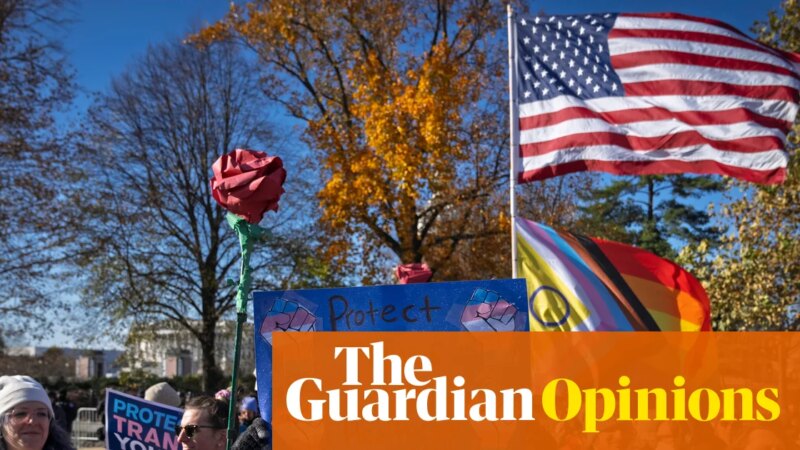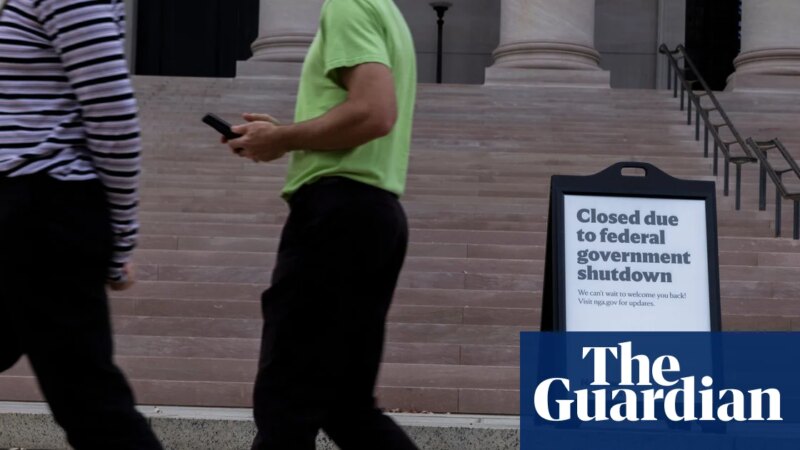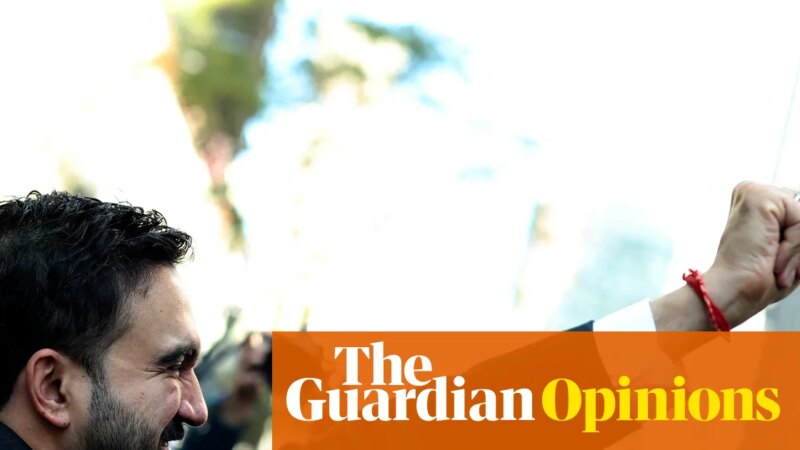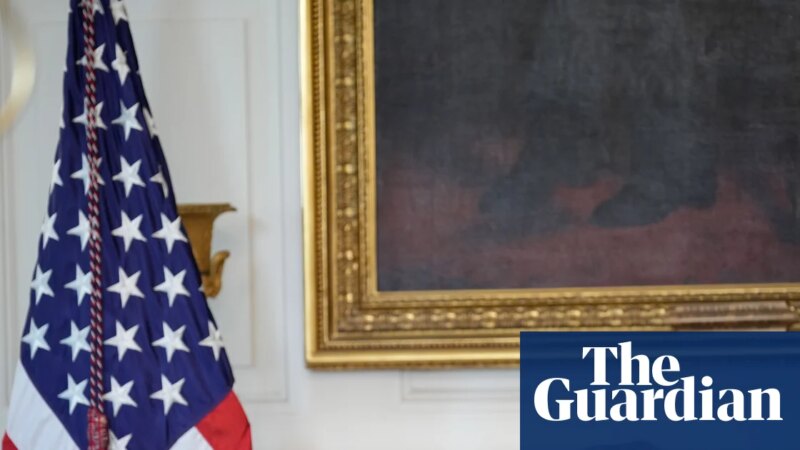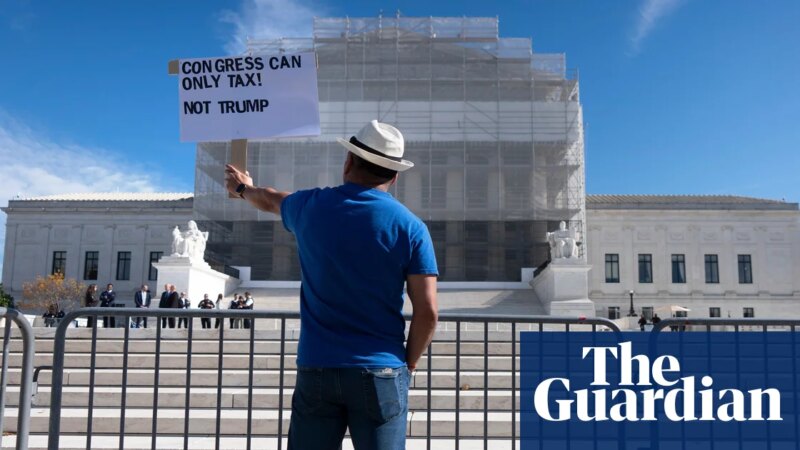Trump-Putin phone call dims Kyiv hopes for US Tomahawk missiles | Ukraine
Vladimir Putin’s surprise phone call with Donald Trump on Thursday appeared to undercut Ukrainian hopes of receiving Tomahawk missiles as Volodymyr Zelenskyy heads to Washington to meet the US president and discuss the issue.
The Kremlin’s top aide, Yuri Ushakov, said Putin had initiated the conversation with Trump, during which the Russian leader urged his US counterpart not to supply Ukraine with the Tomahawk missiles – a weapon long sought by Kyiv that would give it its longest-range strike capability yet and bring Moscow within reach.
It was the eighth known call between the two men since Trump began his second term in January, and followed a familiar pattern in the complex and often confusing contest between Putin and Zelenskyy for Trump’s ear.
On previous occasions, when Trump had seemed ready to tilt towards Kyiv and its European allies, a call from Putin was often followed by a sudden softening in the US leader’s tone towards Moscow.
After strikingly voicing his frustrations with Putin in recent weeks and hinting that he was ready to supply Zelenskyy with Tomahawk missiles, Trump on Thursday night appeared to walk back the possibility.
“We need Tomahawks for the United States of America too. We have a lot of them but we need them. I mean, we can’t deplete for our country,” Trump told reporters in the Oval Office.
“I don’t know what we can do about that,” he added.
Recounting his conversation with Putin, Trump said: “I did actually say: ‘Would you mind if I gave a couple of thousand Tomahawks to your opposition?’ I did say that to him. I said it just that way.
“He didn’t like the idea. You have to be a little bit lighthearted sometimes.”
Trump said he would tell Zelenskyy what he and Putin discussed when he has a face-to-face meeting with the Ukrainian president on Friday.
After his chat with Putin, Trump also announced that he was planning to meet the Russian president in the Hungarian capital on a date still to be determined in an effort to end the war.
Putin’s spokesperson, Dmitry Peskov, on Friday morning said that the summit could take place “within two weeks or later”.
Peskov said Putin had already discussed the planned meeting with Viktor Orbán, the Hungarian prime minister. Orbán – an outlier among European leaders with warm ties to Trump and Putin – said he had also spoken to Trump about the summit, writing on X: “Preparations for the USA-Russia peace summit are under way.”
It remains unclear how Putin would travel to Hungary, given EU sanctions and airspace restrictions imposed after Russia’s invasion of Ukraine, as well as the fact that he is wanted by the international criminal court (ICC). As a signatory to the ICC, Hungary would be obliged to arrest him, though Orbán has previously said this would not happen.
When asked about the logistical challenges, Peskov said the route was “so far, of course, unclear”.
Hungary’s foreign minister, Péter Szijjártó, said on Friday that Putin would be able to enter and leave the country. “There is no need for any kind of consultation with anyone, we are a sovereign country here. We will receive [Putin] with respect, host him and provide the conditions for him to negotiate with the American president,” he told a press briefing.
Trump and Putin last met in Alaska in August, which did not produce a diplomatic breakthrough. Trump added that fresh high-level talks between Washington and Moscow would be held next week, led on the US side by the secretary of state, Marco Rubio, before a presidential summit in Budapest.
Their latest conversation, which lasted more than two and a half hours, appears to have sapped the momentum Zelenskyy had built with Trump, with the US leader now unlikely to show major support for Ukraine before meeting Putin.
“Zelenskyy must be pulling his hair out. Today’s meeting with Trump is now completely overshadowed and overtaken by the Budapest meeting,” said John Foreman, a former British defence attache to Moscow and Kyiv.
Trump also has hinted that talks between Putin and Zelenskyy may need to take place indirectly, contradicting Zelenskyy’s longstanding aim of meeting Putin face to face to end the war.
“They don’t get along too well, those two,” Trump said. “So we may do something where we’re separate. Separate but equal.”
Ushakov, on his part, told reporters in Moscow that Putin warned Trump during the call that supplying Kyiv with Tomahawks “won’t change the situation on the battlefield, but would cause substantial damage to the relationship between our countries.”
Zelenskyy, who touched down in Washington on Thursday and met US defence contractors before his White House visit, has not commented on the Putin-Trump call, though few in Kyiv are likely to view it positively.
Some Ukrainian officials tried to put a positive spin on the call, saying that Putin’s outreach underscored the Russian leader’s fear of new Ukrainian weapon supplies.
“Today’s call between US President Donald Trump and Putin demonstrates how even the discussion about Tomahawk missiles had already forced Putin back into dialogue with America,” Andrii Sybiha, Ukraine’s foreign minister, wrote on X.
“The conclusion is that we need to continue with strong steps. Strength can truly create momentum for peace,” Sybiha added.
While Moscow has repeatedely claimed it is ready to end its invasion of Ukraine, Putin has shown no indication that he is seeking compromise or to scale back his maximalist goal of forcing Kyiv’s capitulation.
Despite Trump’s typically upbeat rhetoric that peace may be within reach, the US vice-president, JD Vance, struck a more cautious note on Thursday, saying that “the Russians and the Ukrainians are just not at the point where they can make a deal”, and that a settlement “remains possible but will require a lot more work”.
In an interview with the conservative network Newsmax, Vance spoke of what he called a “misalignment of expectations”, saying “the Russians tend to think they’re doing better on the battlefield than they actually are”.
Additional reporting by Jennifer Rankin
